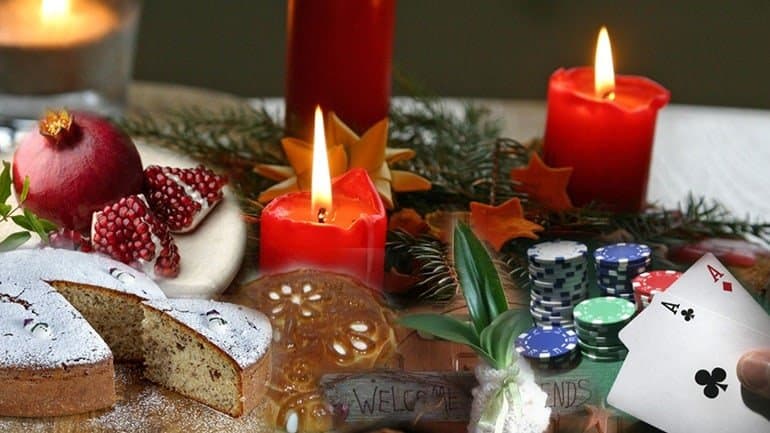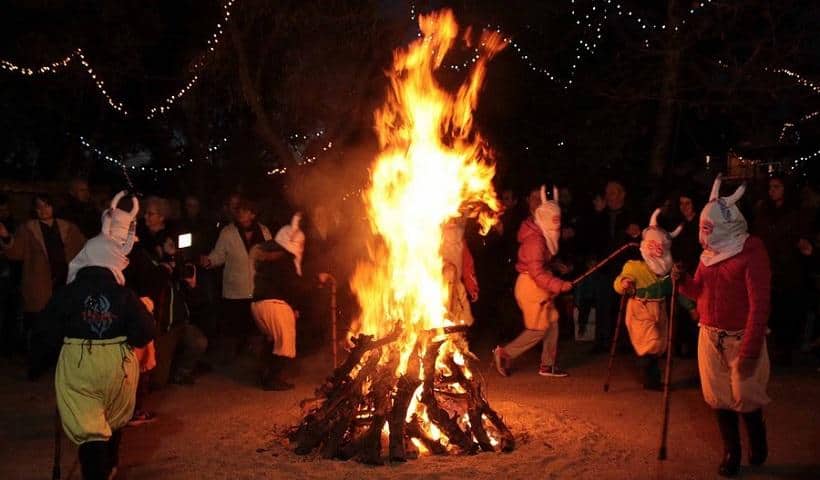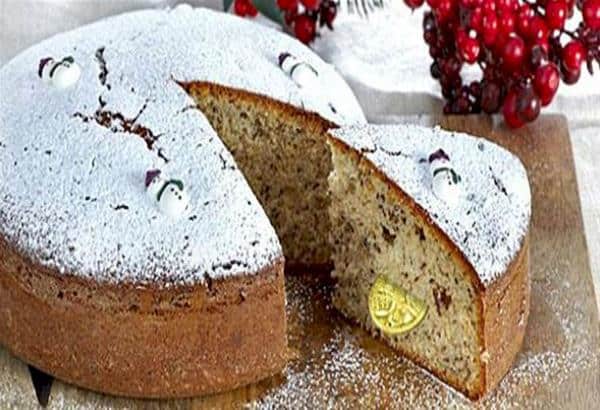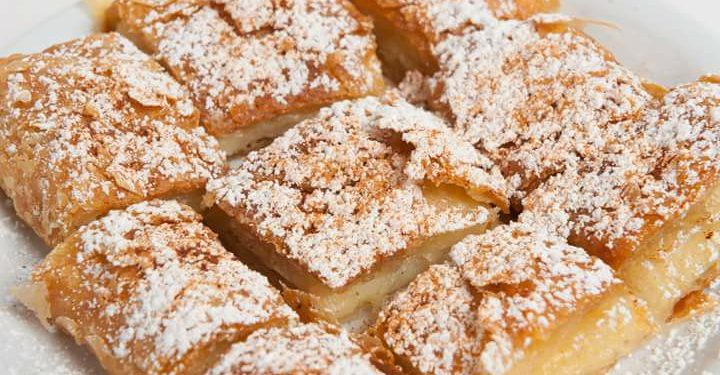Wherever they are in the country, Greeks love to make the best of New Year’s Eve and New Year’s Day, with warm gatherings at home or at restaurants and bars/clubs that involve plenty of good food, drinks and merriment.
However, there are some traditions that are particular to parts of Greece that you may never have heard of and may want to discover or even try!


Carols With Fire
The tradition from Kavala roots in the period of the Ottoman Occupation of Greece. Young men ready to set off for their military service in the coming year, gather wood and pile it up in their village or town square. The wood is set alight on New Year’s Eve to make a big fire and they sing carols until the clock strikes 12. As soon as the New Year comes in, a celebration commences, with tsipouro and sweets offered around.
In other parts of Kavala, the youngest member of the family carries a stone into the home as a symbol of strength and solidity for the whole family in the year ahead. Children in all households enter the house on New Year’s Day with their right foot first to bring in good luck and are given sweets and gifts as thanks.
In Komotini, carol-singing is reserved for New Year’s rather than Christmas. On New Year’s Eve locals walk the streets singing carols and holding lanterns decorated with colourful paper ribbons and boats.
St Basil (Αγιος Βασίλης)
New Year is the time to celebrate the arrival of St Basil. Unlike Santa Claus with his glossy white beard and red cheeks, coca-cola red outfit lined with white fur, large belly, 12 reindeers and a flying carriage, St Basil wore an old robe and had a black beard. The saint hailed from Caesarea of Cappodocia (Asia Minor) during the 4th Century AD and visited Greek households giving his blessing. In return, he would receive a slice of Vasilopita.

Vasilopita
Every household bakes (or now in many cases buys) a Vasilopita, the New Year’s cake named after St Basil. On New Year’s Day, the cake is cut into slices for everyone in the household and family. The ritual in Greek Orthodox homes is to cut the Vasilopita in the following order: first for Christ, then the Virgin Mary, St Basil, for the Poor, the house, and then each family member, usually starting from the man or woman of the house. When the Vasilopita is baked a coin is randomly inserted into it, and whoever finds the coin in their slice is thought to receive blessings and good fortune throughout the new year.
In Halkidiki, apart from the Vasilopita, it’s traditional to also bake other New Year’s sweets such as ‘klikia’ and ‘ftazmit’ka’ among other sweets to offer to carolers, visitors and family members. In Samos they make ‘provenda’, a plate of sweets that is meant to ‘prove’ the culinary skills of the Samiot housewife.
Kali Heria
Before there were toy shops (or the internet) children were accustomed to receiving money instead of gifts from their uncles, aunts, grandparents and close family friends.

Podariko
Even today Greeks are particularly careful who enters their home on New Year’s Day and with which foot first! That’s why usually the process is ‘screened’ or organised in advance, by ensuring that someone the family considers particularly auspicious, kind or lovable is the first the visit and step through the front door. Children are considered especially auspicious first visitors because they are pure-hearted and innocent.
Feeding of the Fountain
In some regions of Greece on New Year’s Eve, people go to their village fountain to “steal the silent water” (called silent because after taking the water they do not exchange a single word on their way back home). They also slather the village fountains with butter and honey, making the wish that as the water flows to the village and to their households it will bring wealth and sweetness into their lives. When families wish for healthy and abundant crops they also “feed” the fountains with bread, honey, pulses or an olive branch.

Fireworks
Fireworks for celebration are as popular in Greece as anywhere else on earth. Not only because of their dazzling magnificence as they explode in different patterns and colours in the sky, but also for their symbolism. Fireworks, like any loud noise that comes from something exploding or crashing, symbolise the ‘breaking’ of bad energy, scaring away of evil spirits and bringing light and renewed spark to those who regard them.
Onion Decoration
The Scilla Maritima bulb, which looks like a giant onion, is a sturdy plant that continues to blossom even when it’s been pulled out of the ground. It is traditionally hung in Greek homes as a symbol of strength, abundance and wellbeing for the year ahead.

Bougatsa Eating
Perhaps one of the funniest traditions is carried out in Heraklion, Crete where on New Year’s Day people eat large quantities of bougatsa (a pie made with filo pastry that’s filled with a rich crème-Anglaise type cream) to ensure that the year will be gratifyingly sweet. On the streets of Heraklion, bougatsa stands are set out offering or selling the sweet, creamy pies.
Burning of the Leaves
In Thassos family members gather around the fireplace and throw olive leaves into the flames amongst the coal and wood. As they do this they each make a silent wish, making sure no one can hear it. The leaf that burns the most symbolises the actualisation of the wish.
Card Playing
On New Year’s Eve, Greeks around the country love to gather at their homes with family and close friends to play cards.
This year we need to be extra careful due to the pandemic which is running rampant around the world
Stay Safe
Kali Hronia to you all!

